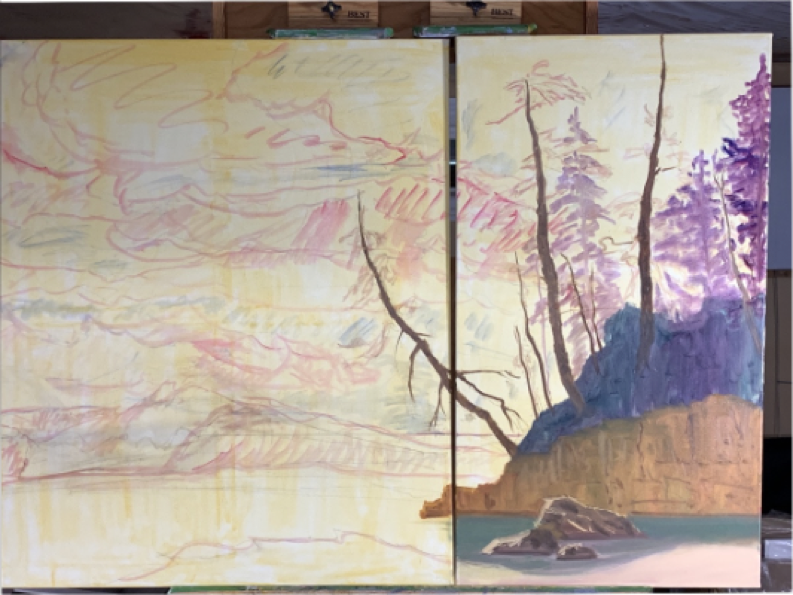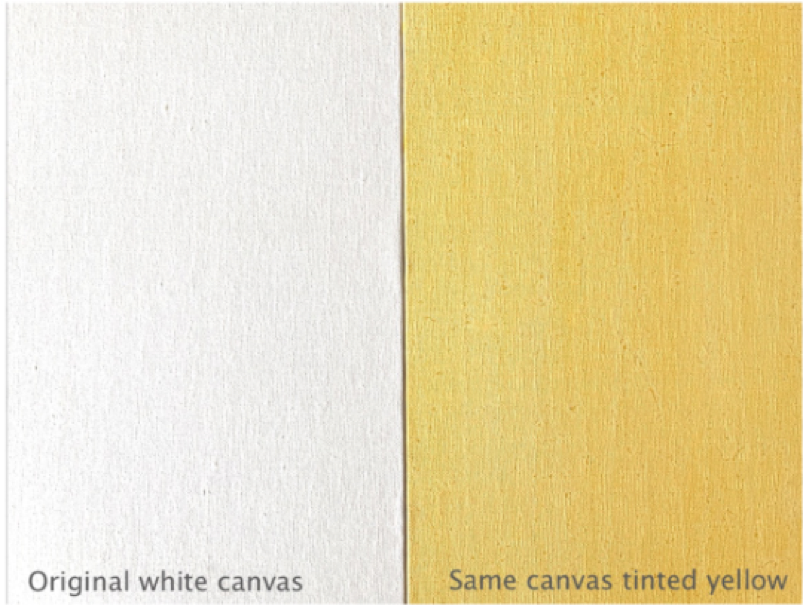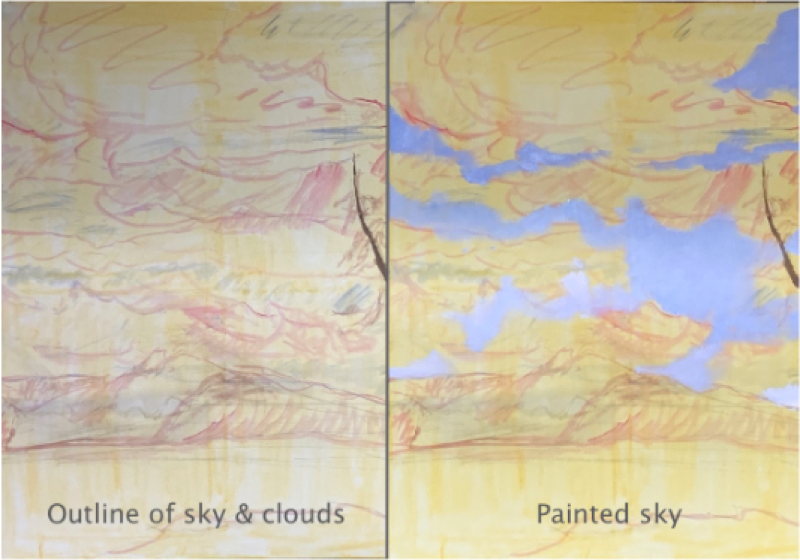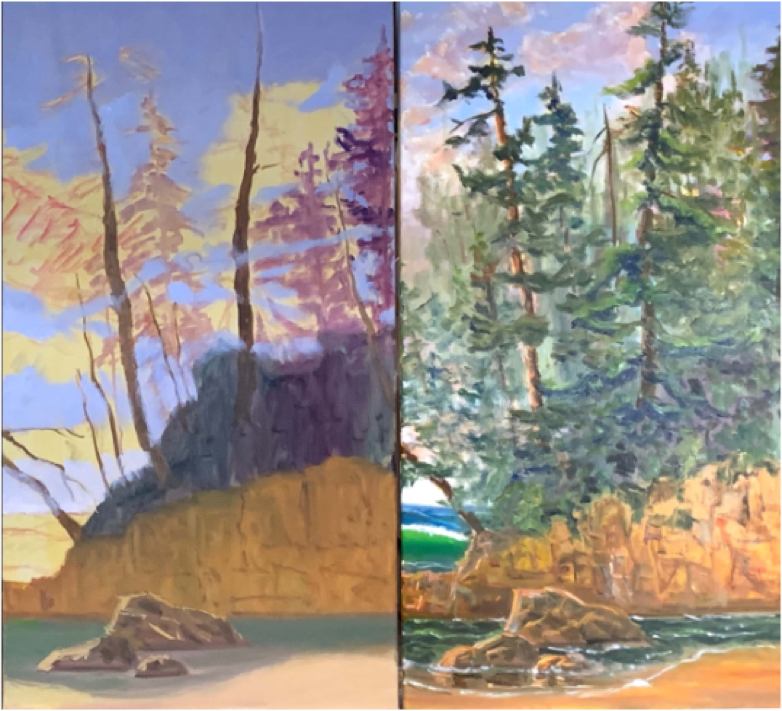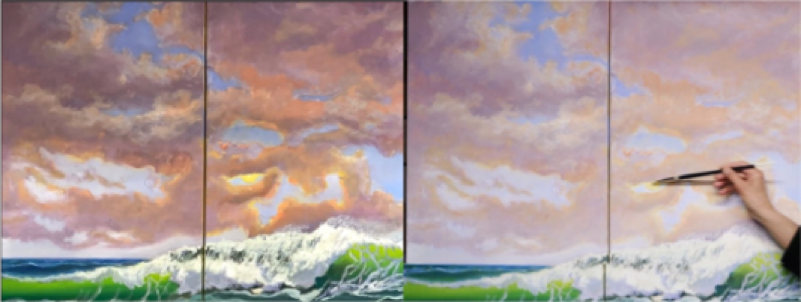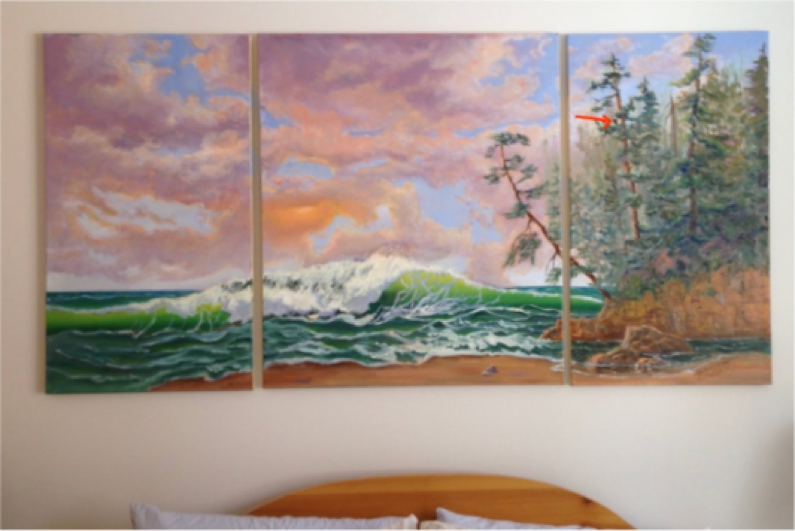Fig 3
Qn. 3: What is blocking in?
Ans: Again, for the sake of clarity, in fig 3, the same sections of the painting have been reproduced side by side.
The image on the left has the trees, the bushes, the cliff, the clouds, the rocks, water and the beach all "blocked in". Essentially blocked in areas look two dimensional and cartoonish upon which details are added to give it a structure and a three dimension look. Since during blocking in, the paint is applied thinly, mistakes are easier corrected at this stage thus it also helps in composition of the painting.
Qn.4: Why does the sky look much better in Part 3 Fig 4 than in the final image?
Ans: Again the sections of the images have been reproduced here. The image on the left is the fig #4 being referred to and the image on the right is a later image.
This is purely a photographic distortion. The sky on the final image indeed looked exactly like it looks on the image on the left except for the sun.
Qn 5: Does the leaning tree have anything to do with the secret message?
Ans: No. It does not. It is a compositional aid. If all the trees are similar in size, shape located equidistant to one another etc. The mind of the viewer gets bored and soon the viewer quits looking at the painting. To entertain the audience, each and every thing in the painting has to be unique, e.g. cloud shapes, their colour, the number and shapes of the rocks, the jagged edges of the cliff etc. In addition, the leaning tree is a tool used by artists to subtly guide the viewers eyes to the centre of interest, in this case the crest of the wave. As the red arrow indicates, the artists intent is for the viewers eyes to land on the leaning tree (which is so different and thus attractive) the eyes then follow up the trunk of the leaning tree, along its boughs then the eyes jump to the adjacent clouds and on to the wave.
